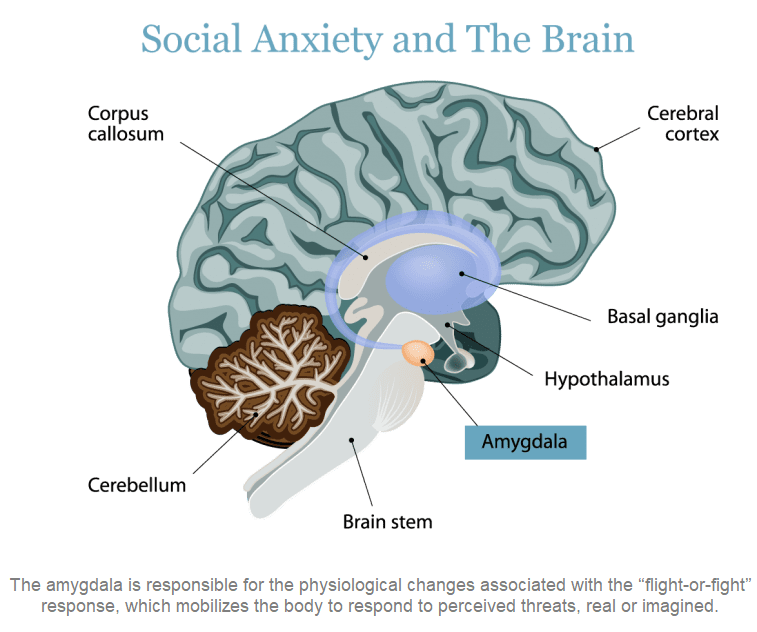
The fight or flight response is an automatic physiological reaction to an event that is perceived as stressful or frightening. The perception of threat – even a social one – activates the sympathetic nervous system and triggers an acute stress response that prepares the body to fight or flee. These responses were early evolutionary adaptations to increase chances of survival in threatening situations.
Unfortuately, many with social anxiety develop threat systems which become overactive. Perceiving a social situation as difficult – or becoming hyper-aware of their own stress levels – can trigger a cascade of panicky thoughts and symptoms including rapid heartbeat, sweaty palms, fast breathing, tight muscles – anxiety levels that make it hard to think or reason normally.
It is normally the job of the prefrontal cortex to calm anxiety reactions by assessing them rationally and calmly, and if no real threat is present, to send signals to the amygdala and parasympathetic nervous system to defuse the anxiety response. But in social anxiety sufferers, the prefrontal cortex may actually amplify the activity of the amygdala .
Without succesful calming strategies more stress hormones get released, often fuelled by unhelpful thinking patterns as we fight the anxiety and try to pretend that everything is ok. The sensations and symtoms may be very persistent and intense. In some cases, they may lead to a panic attack.
Over time people with social anxiety learn to interpret particular social interactions as threats. The sensations and symptoms seem to come rapidly and as if from nowhere. For some people all social/public situations can become seen as a threat, even whilst in queue, or walking or driving.
Fortunately we can learn to get better. Brains can be reprogrammed to form new circuits and connections at any age. Cascades of panicked thoughts and symptoms, just as in other anxiety conditions, can be managed down to more accepatble levels – or complete remission. With the help of cognitive-behavioral therapy (the preferred form of therapy for social anxiety), people with social anxiety disorder can retrain their brains to react more rationally and calmly.
Please also see https://socialanxietyalliance.org.uk/grounding-techniques-to-help-calm-yourself-in-situ/
Also see these links:
www.itsjustafeeling.co.uk – Panic is a trick
www.nationalsocialanxietycenter.com – Anxious about being anxious
www.psychologytoday.com – The social anxiety spiral
www.insighttimer.com – What is an anxiety spiral
See this leaflet to find out more about the Vicious Cycle of Anxiety.

